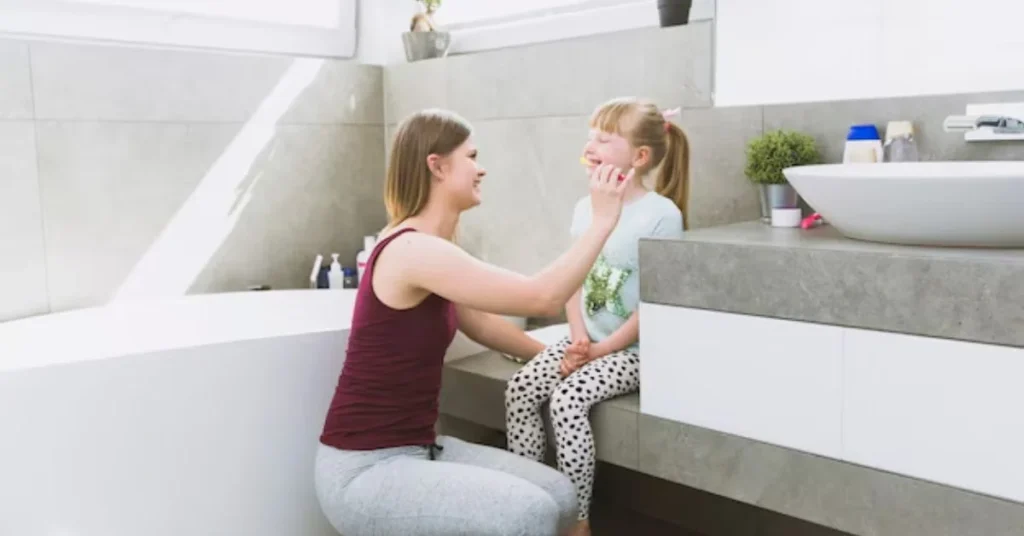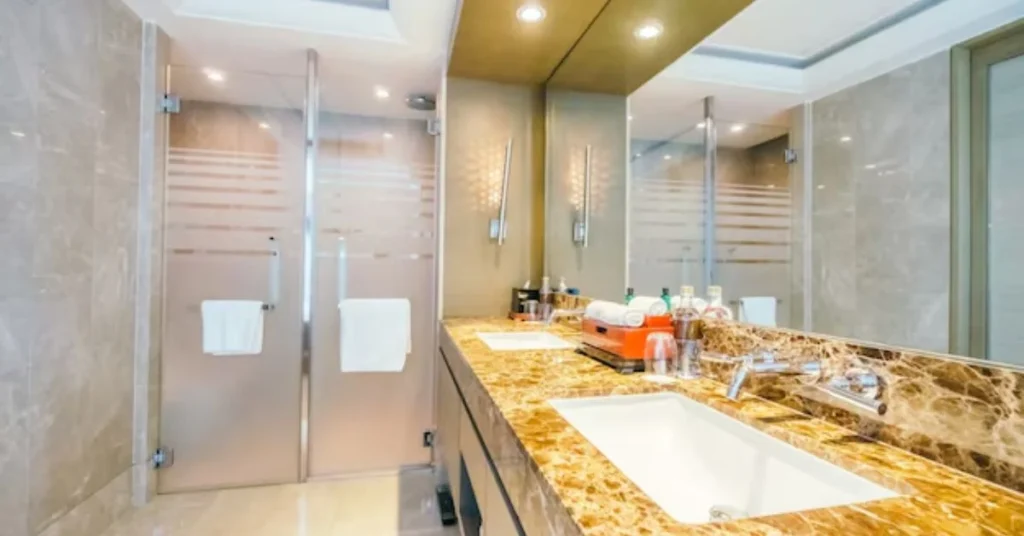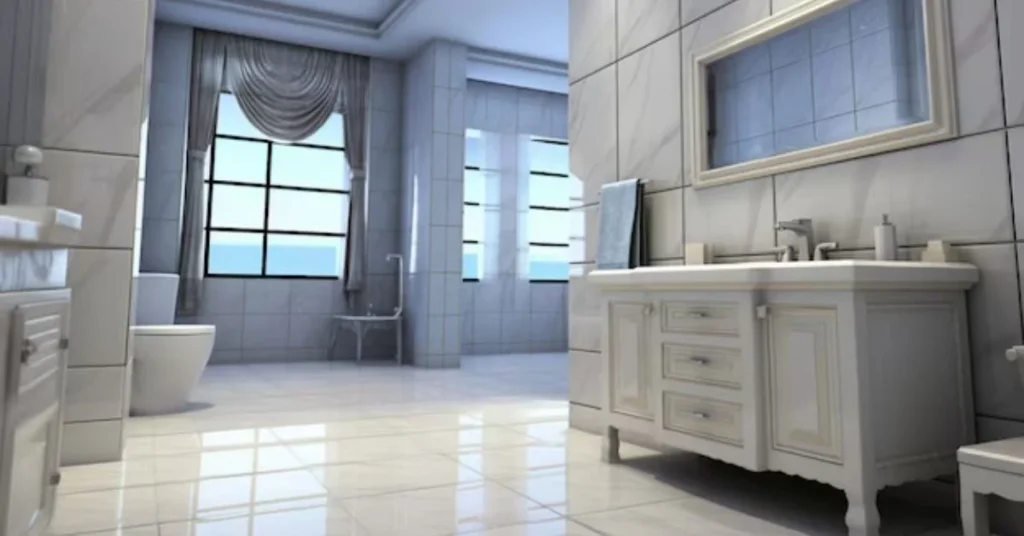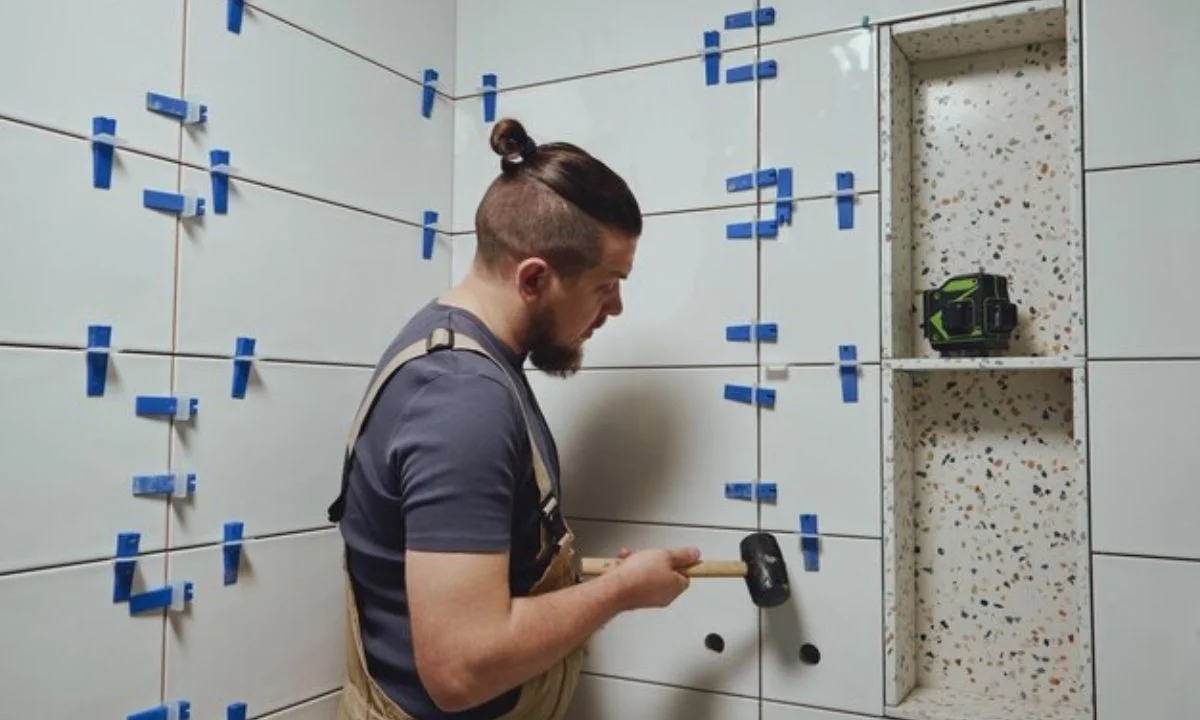When it comes to renovating your bathroom, one of the biggest decisions you’ll face is how to cover your walls. You’re probably wondering, What is cheaper: tiling a bathroom or using panels? Both options have their benefits, but knowing which one is more cost-effective will help you stay within your budget while achieving the look you want.
In this blog post, we will break down the costs, advantages, and disadvantages of bathroom tiles and panels. We’ll also explore how easy each option is to install and maintain, so you can make an informed decision.
Must read FAQLogin.com Home Improvement
Tiling a Bathroom: Costs and Benefits
What Is Cheaper Tiling a Bathroom or Using Panels?
Tiling is the traditional choice for bathrooms and offers a classic, polished look. The cost of tiling a bathroom can vary depending on several factors, such as the type of tiles you choose, the size of the bathroom, and whether you plan to install them yourself or hire a professional.
On average, the price of ceramic or porcelain tiles ranges from $2 to $15 per square foot. High-end tiles, such as natural stone or intricate mosaic tiles, can cost significantly more, ranging from $20 to $50 per square foot.
In addition to the cost of the tiles, you will also need to consider the price of adhesive, grout, and installation tools. If you hire a professional, expect to pay an extra $5 to $10 per square foot for labor.
Total Costs of Tiling a Bathroom:
- Tiles: $2–$50 per square foot
- Grout and adhesive: $1–$5 per square foot
- Labor: $5–$10 per square foot (if hiring a professional)

Pros of Using Tiles in the Bathroom
Tiling offers a wide range of design options, making it a popular choice for homeowners who want to create a personalized bathroom. Some of the advantages include:
- Durability: Tiles, especially porcelain and ceramic, are highly durable and resistant to water damage, making them ideal for bathrooms.
- Aesthetic flexibility: Tiles come in different sizes, colors, and patterns, allowing for endless design possibilities.
- Resale value: High-quality tiles can increase the value of your home by giving the bathroom a more luxurious feel.
Cons of Using Tiles in the Bathroom
While tiling has many advantages, there are some drawbacks to consider:
- Cost: As mentioned, tiles can be expensive, especially if you opt for high-end materials and hire a professional installer.
- Time-consuming installation: Tiling a bathroom is a labor-intensive process that can take several days to complete.
- Grout maintenance: Grout lines can be difficult to clean and are prone to mold and mildew, requiring regular maintenance.
Bathroom Panels: Costs and Benefits
What Are the Costs of Bathroom Panels?
What Is Cheaper Tiling a Bathroom or Using Panels then Bathroom panels, also known as shower wall panels, have gained popularity as an affordable and easy-to-install alternative to tiles. The cost of bathroom panels varies depending on the material, but they are generally more budget-friendly than tiles.
On average, PVC panels cost between $5 and $10 per square foot, while acrylic panels range from $10 to $20 per square foot. High-end options, such as solid-surface panels, can cost up to $40 per square foot.
Since panels come in large sections, they require fewer materials and tools to install. Plus, most panels can be installed by homeowners without professional help, further reducing costs.
Total Costs of Bathroom Panels:
- PVC panels: $5–$10 per square foot
- Acrylic panels: $10–$20 per square foot
- Labor: $0 (if DIY), or $3–$5 per square foot (if hiring a professional)

Pros of Using Bathroom Panels
Bathroom panels have become a popular choice due to their affordability and ease of installation. Some benefits include:
- Cost-effective: Panels are generally cheaper than tiles, both in terms of material costs and labor.
- Quick installation: Panels are easy to install, often taking just a few hours to cover an entire bathroom.
- Low maintenance: Since panels don’t have grout lines, they are easier to clean and less prone to mold and mildew.
- Waterproof: Most bathroom panels are completely waterproof, making them a practical choice for wet areas.
Cons of Using Bathroom Panels
Despite their affordability, bathroom panels do have some disadvantages:
- Limited design options: While panels are available in various colors and finishes, they don’t offer the same level of design flexibility as tiles.
- Less durable: While panels are water-resistant, they may not be as durable as ceramic or porcelain tiles, especially in high-traffic areas.
- Lower resale value: Panels may not add as much value to your home as high-quality tiles, especially in upscale markets.
Comparing the Costs: What Is Cheaper Tiling a Bathroom or Using Panels
Now that we’ve explored the pros and cons of both options, let’s compare the costs to determine which is cheaper: tiling a bathroom or using panels.
Initial Costs:
- Tiling: $8–$65 per square foot (including materials and labor)
- Panels: $5–$25 per square foot (including materials and labor)
Installation Time:
- Tiling: 2–3 days (or more, depending on the size of the bathroom)
- Panels: A few hours to 1 day
Maintenance:
- Tiling: Regular cleaning is required, especially grout lines.
- Panels: Minimal maintenance is needed.
Overall, panels are typically cheaper to purchase, easier to install, and require less maintenance. However, tiles offer more design flexibility and durability in the long term.
Which Is Easier to Install: What Is Cheaper Tiling a Bathroom or Using Panels?
Installing Tiles
Tiling is a more complex process that involves cutting tiles to size, applying adhesive, and carefully spacing each tile. You’ll also need to grout the lines and seal them once the adhesive dries. This can be time-consuming, and unless you’re experienced, you may need to hire a professional.
Installing Panels
Panels are far easier to install. They come in large sections that cover entire walls, reducing the time and effort required. Most panels can be installed directly over existing surfaces, which makes them a convenient option for bathroom renovations.
Which Is More Durable: What Is Cheaper Tiling a Bathroom or Using Panels?
While both tiles and panels are durable, tiles tend to last longer. Ceramic and porcelain tiles are highly resistant to water, scratches, and stains. Bathroom panels, while water-resistant, can be more prone to scratches or dents, especially if made from PVC. However, high-quality acrylic or solid-surface panels offer similar durability to tiles.

Conclusion: What Is Cheaper Tiling a Bathroom or Using Panels?
So, What Is Cheaper Tiling a Bathroom or Using Panels? If you’re on a tight budget, bathroom panels are the more affordable option. They are not only cheaper to purchase but also easier and faster to install. However, if you want a long-lasting, durable, and customizable option, tiles may be worth the extra investment.
When deciding between tiles and panels, consider your budget, design preferences, and how much time you’re willing to spend on installation and maintenance. Both options have their benefits, and the right choice depends on what matters most to you. For more information click here.
Average cost difference between and What Is Cheaper Tiling a Bathroom or Using Panels?
On average, bathroom panels are more affordable, costing between $5 and $25 per square foot, while tiling can range from $8 to $65 per square foot.
Can I install bathroom panels myself?
Yes, bathroom panels are designed for easy DIY installation. Many homeowners install them without professional help.
Are bathroom panels durable?
While bathroom panels are water-resistant and durable, they may not last as long as ceramic or porcelain tiles, especially in high-traffic areas.
Do tiles add more value to my home than bathroom panels?
Tiles typically add more value to a home due to their durability and design flexibility, especially in high-end properties.
How long does it take to install bathroom panels compared to tiles?
Bathroom panels can be installed in a few hours to a day, while tiling can take 2 to 3 days or longer, depending on the bathroom’s size.
